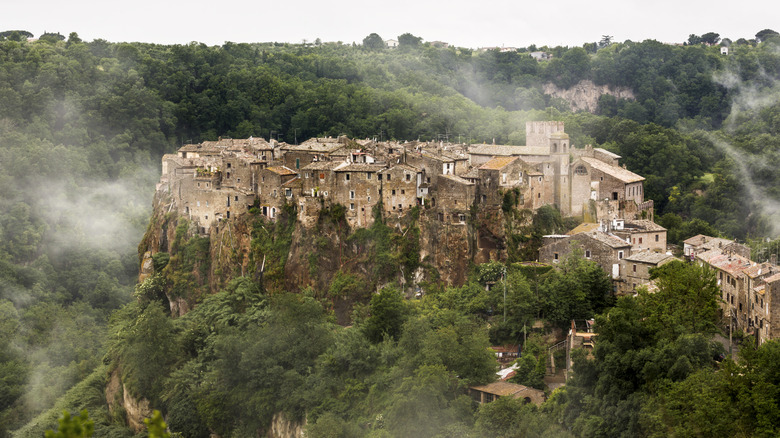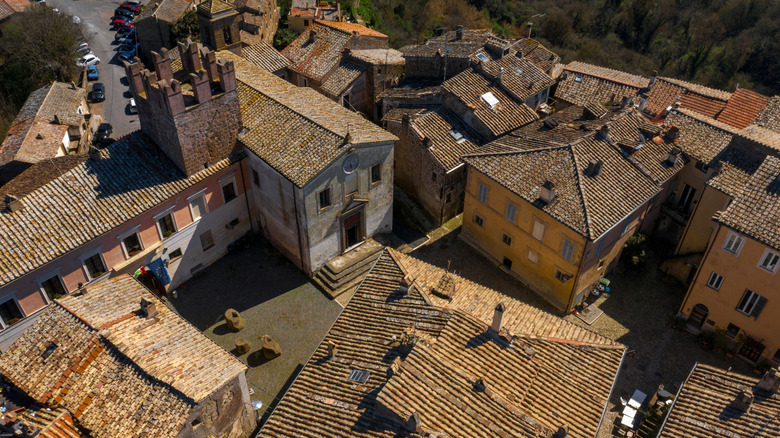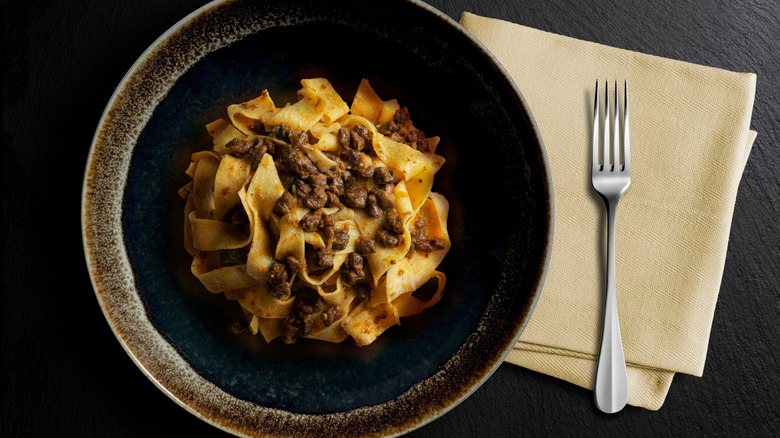A Fairytale Cliffside Village Of Cobbled Streets In Italy Is An Artsy Haven With A Bohemian Spirit
Wrought from the very jutting rock that it stands on, the volcanic cliffs of Calcata were once deemed too dangerous for habitation. The fortified historic center of the village that had stood for centuries was condemned by the Italian government in the 1930s, fearing the crag beneath may collapse. So, the locals left, and the relic resigned to crumble for 30 years. In the '60s, the abandoned center began to be repopulated by squatting hippies and artists, making their homes out of the medieval structures still standing the test of time. The condemnation was eventually reversed, and the artistic community thrived; its bohemian spirit still flourishes today.
Across Italy, beautifully preserved hilltop towns like Anghiari offer incredible history and medieval charm, but none can match the commune-style charm of Calcata. Blending the ancient and the contemporary, the medieval buildings of Calcata's historic center house art galleries and cafes, and the slim alleys are flanked by artisans touting antiques and handmade jewelry.
After landing in Italy and dipping your toes in the hippy atmosphere of Rome's most charming neighborhood, home to an eclectic boutique hotel with bohemian flair, submerge yourself in the laidback culture of Calcata. The village is a mere hour away from the capital, accessible from the road that winds through the forest thickets of the Treja Valley. While hiring a car is by far the easiest option, travelers sticking to public transport can hop on the light train service from Via Flaminia in Rome to Saxa Rubra, where a bus route connects travelers to Calcata Vecchia.
What to see and do in Calcata, Italy
To truly absorb the atmosphere of Calcata's ancient streets and bohemian community, it should be toured on foot. Strolling through its medieval streets, you'll pass by the 14th-century Church of Santissimo Nome di Gesù. This unassuming site of worship in Calcata was once venerated across the Catholic world and was even a pilgrimage site in the Middle Ages. Pious processions used to climb the hill, commemorating the Feast of the Circumcision of Christ. The church was thought to be the hiding place of the Holy Prepuce, a relic claimed to be taken from the body of Christ himself. It mysteriously vanished in the '80s, and the pilgrims along with it.
The church is situated in the main square, Piazza Umberto I. Stop to admire the sculptures standing sentinel in the square, carved from the volcanic rock that underlies the village. Continue to roam through the cobbled lanes to reach a museum dedicated to rural Italian culture and an 11th-century baronial palace. Moving on from the medieval to the modern, pop in on the artists working away in studios and handicraft stores and browse for celestial trinkets and vintage garb in the village's unique boutiques.
Many visitors pair their village tour with a hike in the valley that sprawls out beneath the village. Stick to the artistic theme and choose to take the trail through the Opera Bosco Nature Preserve, an open-air art museum made by the Calcata locals using only materials found in the forest.
Where to eat and drink in Calcata, Italy
In Italy, eating never strays far from the fore of your mind. Small-operation and family-run restaurants and cafes are all you'll find in Calcata — typically the style of joint where you'll find the best food in Italy. Though the country is naturally famed for its steaming espressos and cherished coffee culture, La Sala dei 201 Tè, a teashop in Calcata, boasts a huge array of flavors from around the world. If you do opt for a coffee in the village's quaint cafes instead, be careful what you order — one of the most popular coffee orders in America will get you a cup of milk in Italy. Pair your hot drink with fresh baked goods from Forno La Mattra, serving everything from sweet treats to small pizzas.
The village's restaurants take a less alternative approach, simply dishing up delectable Italian classics. Tuck into hearty pasta dishes by the hearth in Il Guazzabuglio, enjoy local flavors in a traditional trattoria like I Tre Monti, or stick to the boho theme and order off the all-vegan menu at La Grotta dei Germogli. If you're planning to stay late, cap off the evening at Bard House Gipsy Club, a small local venue that hosts bands playing blues, jazz, rock, or alternative tunes.


